Art World
A New Documentary on HBO Shows How Black Artists Crafted Their Own Histories in the Face of an Art World That Excluded Them
A new documentary on HBO takes as a point of departure a 1976 exhibition that changed everything.
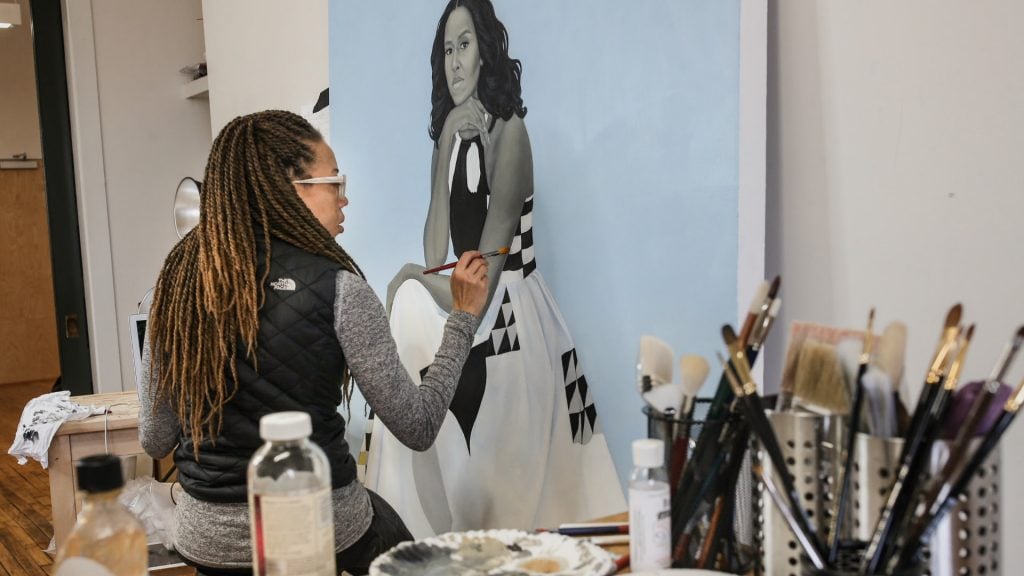
A new documentary on HBO takes as a point of departure a 1976 exhibition that changed everything.

Melissa Smith

In an early scene in the new HBO documentary, Black Art: In the Absence of Light, artist and art historian David Driskell is working on a new piece in his studio, dipping his paintbrush into a bottle of glue to stick scraps of paper onto a canvas. He notes that it was Romare Bearden who inspired his lifelong commitment to collage—so much so that after he met the renowned artist in the late 1970s, he created a piece in his honor.
When Bearden himself later saw that work in a show, he wasn’t impressed. “What you’re doing there is not David, it’s Romie,” he said to Driskell. Later, Bearden walked over to another piece of Driskell’s, stopped in front of it, and said, “Now that’s you, that’s your voice.”
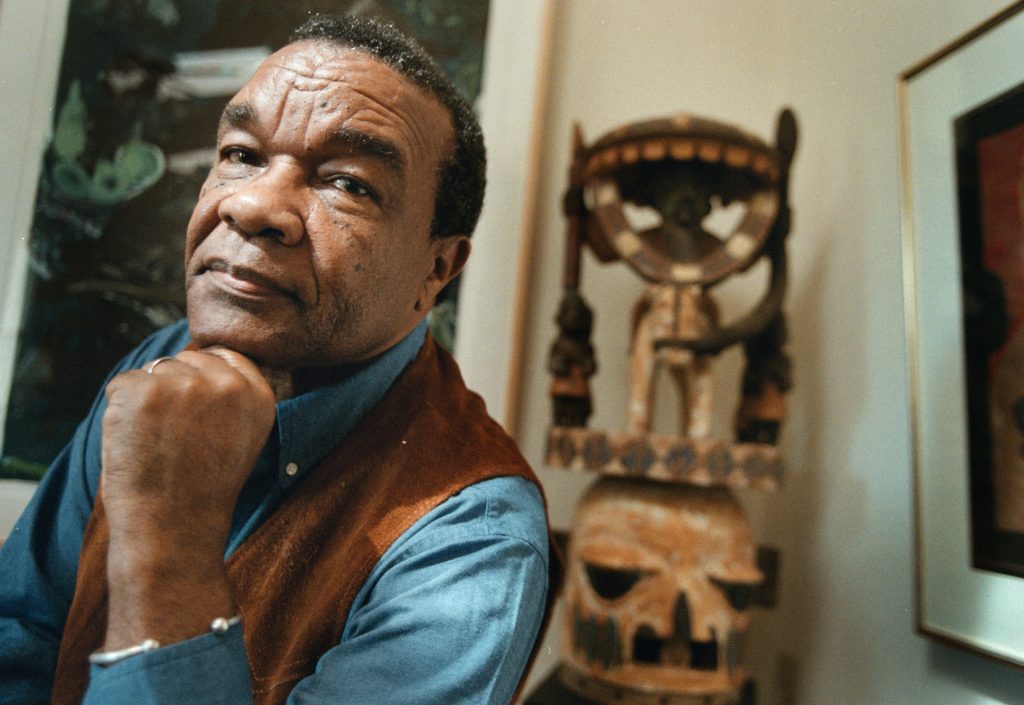
Portrait of David C. Driskell inside his home with some of his artwork. Photo: Washington Post for Getty Images.
Anchored by his 1976 exhibition, “Two Centuries of Black American Art,” the first-ever large-scale show of work by Black artists from around 1750 to 1950, Driskell—who died last April—narrates a large part of the film, often giving grounded and matter-of-fact insights into questions that continue to roil the mainstream art world.
The film introduces Driskell using footage from an interview he did about the show with Tom Brokaw, who asks him why he disagrees with certain people setting Black artists apart. The crux of Driskell’s answer: because these artists didn’t ask to be, now did they?
Historian Henry Louis Gates, Jr. set the ball rolling for this documentary, later bringing in Studio Museum in Harlem director Thelma Golden as consulting producer. A year later, they reached out to seasoned director Sam Pollard to join in, who then compiled a list of names for interviews based on the mutual decision to center the film on “Two Centuries of Black American Art.” The result brings together generations of Black artists, from Kehinde Wiley to Fred Wilson and Carrie Mae Weems, as well as prominent curators, scholars, and collectors.
The film arrives at a time when the art world has at least started to accept the idea that Black art and artists have been systematically excluded from its institutions. It’s part of what Theaster Gates means when he says, in one of the film’s most memorable quotes, “Black art means that sometimes I’m making when no one’s looking.” On top of the many artists and scholars outlining this cycle of neglect, the film also, mercifully, provides glimpses of what it looks like for artists to have moved on in spite of it, to have found their artistic voices in the absence of any light.
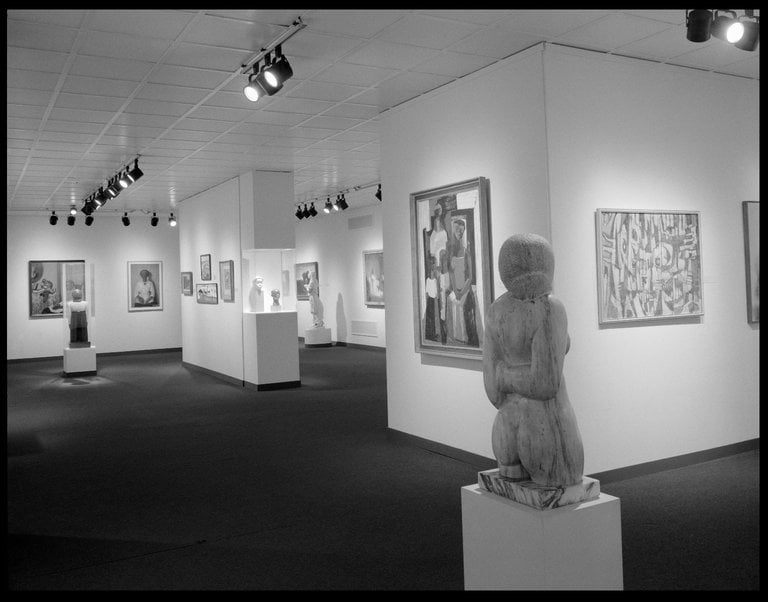
Installation view, “Two Centuries of Black American Art” June 25, 1977 through September 05, 1977. Photo: Brooklyn Museum.
Right at the beginning, the film contextualizes how significant a show like “Two Centuries of Black American Art” was. By drawing massive crowds to major museums in Los Angeles, Brooklyn, Houston, and Atlanta, it sent “a message,” says late art historian Maurice Berger. What it said “is that these are the manifestation of African-American artistic brilliance over two centuries.”
Leaving it at that would have only told half the story. Thankfully, the film then shifts its focus to the show’s impact on Black artists. For there to have never been a large show featuring Black art before 1976 means that an artist like Kerry James Marshall, who was 21 at the time, never experienced an institution supporting Black art. Even those who were too young to have seen the show, or hadn’t even been born yet, like Sanford Biggers and Jordan Casteel, were moved by the scope of the exhibition.
For Casteel, just thumbing through the show’s catalogue inspires a sense of belonging. And Casteel is one of the lucky ones. She grew up with works by Elizabeth Catlett, Charles White, and Hale Woodruff hanging on the walls of her home. Many others had to rely either on shows like “Two Centuries of Black American Art,” or the mentorship of other, equally marginalized Black artists, to feel like they were part of something.
When people say there are many art worlds, watching “Black Art” gives you a better idea of what they mean. Black artists found support through their own networks. There is a moment in the film when Marshall remarks on first seeing a Charles White portrait. Before that, he’d only been exposed to European artists, and like Driskell with Bearden, his development as a creator is part and parcel of seeing that piece—the same applies to his introduction to Betye Saar’s work.
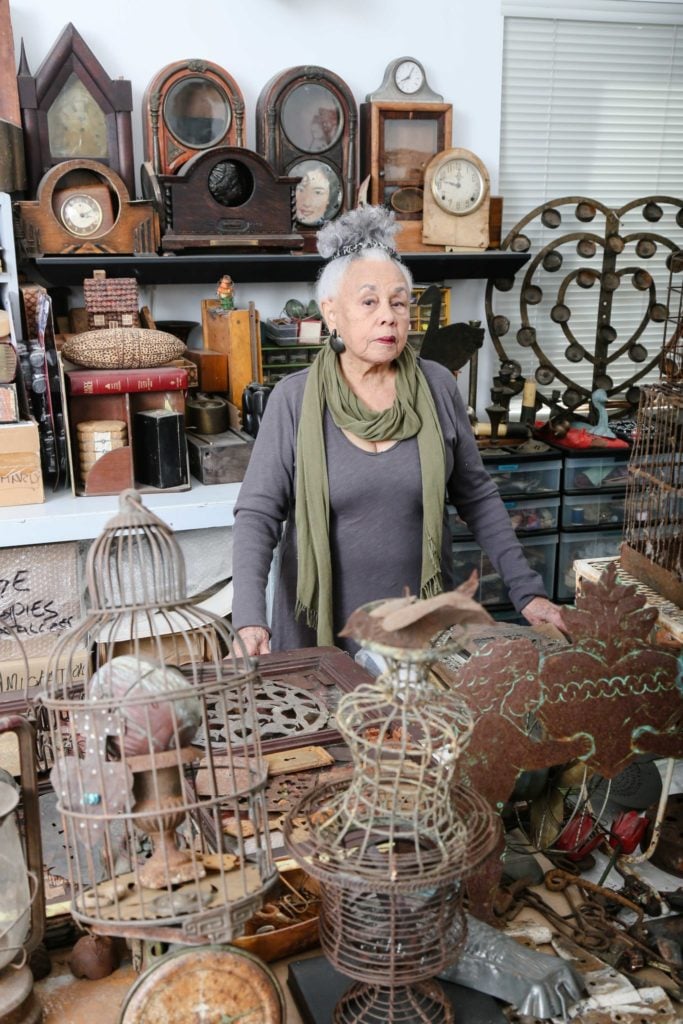
Betye Saar in her Los Angeles studio (2015). Photo by Ashley Walker; courtesy of the artist and Roberts Projects, Los Angeles.
Another prominent voice in the film, Spelman College president Mary Schmidt Campbell, talks about the Spiral Group. In 1963, Black artists, including Norman Lewis and Richard Mayhew, started it to collectively engage with the Civil Rights movement. It is, in a way, a little bit liberating to then hear fellow artist Faith Ringgold say that Bearden didn’t let her join, reinforcing how she wasn’t “allowed to sit with the men who were in the struggle with me.” Perhaps we’ve reached a point, at least in part, where exploring different opinions within the movement doesn’t end up threatening the overall cause.
While this film touches on this nuance in a section on Kara Walker’s imagery of the antebellum South, which some found propped up negative stereotypes and painful to look at, it could have been explored with even more depth in some sections—like in discussions about politics and the Black aesthetic. Many Black artists, throughout their careers, were forced to answer for themselves the extent to which the two should be linked. But much in the same way Driskell’s show was criticized for not encompassing enough, there is only so much one movie should be asked to do.
In the end, Black artists are Black artists in the shared belief that the art world has, in one way or another, shut them out; and in the formulation of priorities and motivations in response.
Fortunately, the film also explains the extent to which Black institutions, like the Studio Museum in Harlem and museums at historically Black colleges and universities, have picked up the slack. And now that we’re experiencing a greater crossing over, a segment on prominent collector Swiss Beatz explains that in order for mainstream museums to connect with Black communities, they’ll have to not only re-examine their priorities, but also transform their institutions into places where Black people want to be.
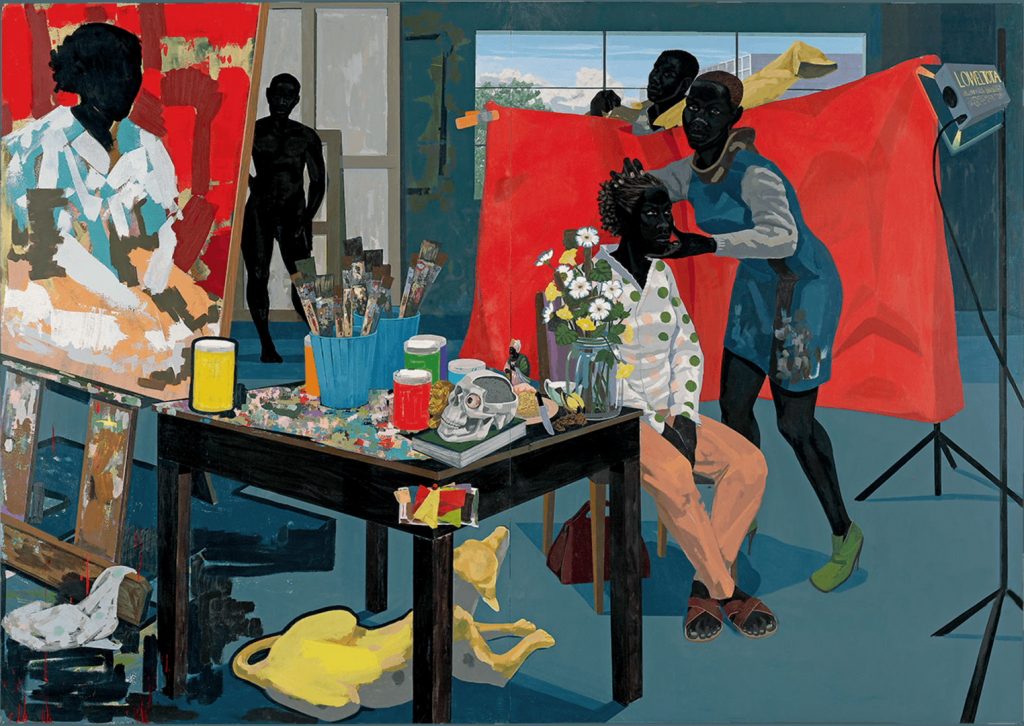
Kerry James Marshall, Untitled (Studio) (2014). Courtesy of HBO.
Because the realities of how Black people are treated—within institutions and otherwise—is reflected in the work itself. Learning what informs that process, from why Marshall uses his deep black pigments to why the subjects in Amy Sherald’s portraits all tend to have a confrontational gaze, is one of the more nourishing parts of watching this film. Those choices aren’t accidental. Theaster Gates isn’t just tinkering around with abstraction. He put a series of fire hoses together for a piece to reference the history of Black protest.
As Driskell explained to Brokaw, many Black artists existed, and still exist, outside of any central group that moves and shifts in relationship with each other. So, for example, during many years when the art world dismissed Marshall’s work on the grounds that “representation is a not viable part of painting,” he says, the artist refused to then code switch his way to mainstream success.
“In time your work will find your own friends,” Ringgold bluntly puts it. Today, it seems like that time has come for many Black artists. But at the very end of the film, Gates provides a reality check. “Until we own the light,” he says, “I’m not happy.” In that way, are these even the friends they want to have?